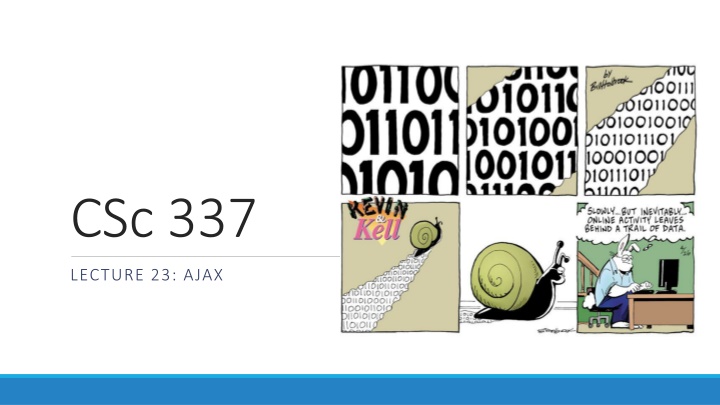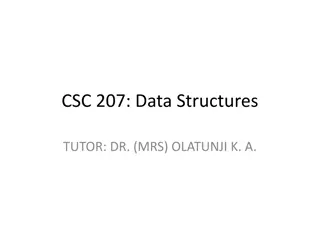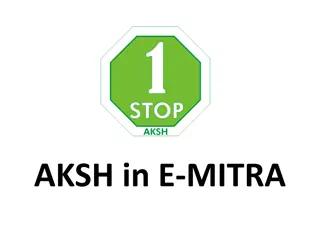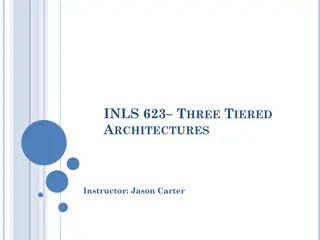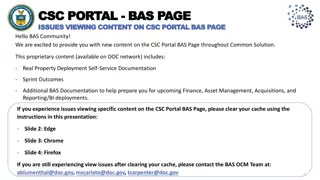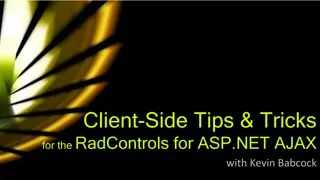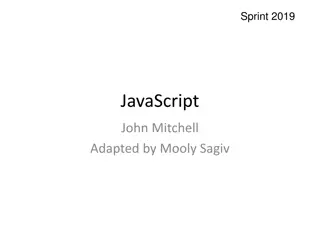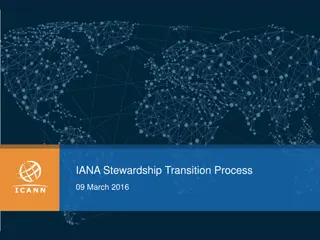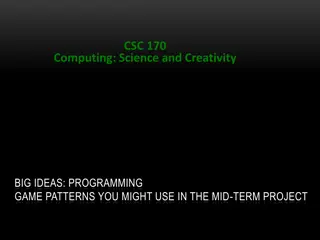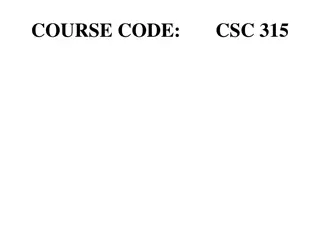CSc.337LECTURE.23: AJAX
In this lecture, you will delve into the intricacies of AJAX, a vital technology for building interactive web applications. Discover how AJAX facilitates asynchronous data exchange between the client and server, enhancing user experience. Explore practical examples and learn to implement AJAX effectively in your projects. Gain insights into handling data requests, updating content dynamically, and creating responsive web interfaces with AJAX. Elevate your web development skills with a deep dive into AJAX concepts and techniques.
Download Presentation

Please find below an Image/Link to download the presentation.
The content on the website is provided AS IS for your information and personal use only. It may not be sold, licensed, or shared on other websites without obtaining consent from the author.If you encounter any issues during the download, it is possible that the publisher has removed the file from their server.
You are allowed to download the files provided on this website for personal or commercial use, subject to the condition that they are used lawfully. All files are the property of their respective owners.
The content on the website is provided AS IS for your information and personal use only. It may not be sold, licensed, or shared on other websites without obtaining consent from the author.
E N D
Presentation Transcript
CSc 337 LECTURE 23: AJAX
Node.js We will be using node.js to run our server code (The code that generates what your fetch requests get) Download node.js: https://nodejs.org/en/ Double click on the downloaded file and follow the instructions to install it.
Running node.js You will need a command line to run node.js Window: you can use the built in command prompt, PowerShell (recommended), or download a command line like Cygwin Mac: there is a nice built in command line. Just search for "console" Linux: there is a nice built in command line
Testing that node is installed Open up your command line and type the following: node -v The version number of node on your machine should be output. If nothing is output or if there is an error node didn't install correctly.
Installing Express Run the following to install Express: npm install express
Node server Copy the following code into a file and name it server1.js // CSC 337 hello world server const express = require("express"); const app = express(); app.use(express.static('public')); app.get('/', function (req, res) { res.header("Access-Control-Allow-Origin", "*"); res.send('Hello World!'); }) app.listen(3000);
Running the node.js server You will need to navigate to the directory containing the file you created from the code on the last slide. To move between directories you can use: cd <directory> cd will move you into the directory specified. If you want to move into the parent directory, use .. as the directory name. If you want to see what directories exists in the directory you are in use ls to list them
Running the node.js server Once you have gotten to the directory that contains your server code, you can run it with the following command: node service1.js You will not see anything appear on the command line. To see it running open your browser and type the following in the address bar: http://localhost:3000/
Writing code to fetch from the server Write HTML and JavaScript to, when a button on the page is clicked, fetch data from the web server and inject that data into the page.
